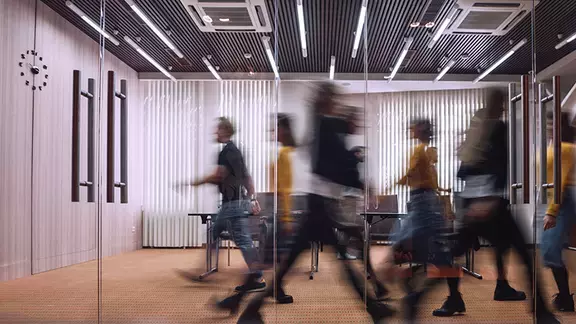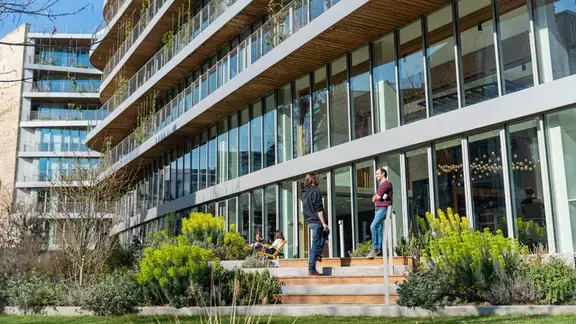-
Our solutions
- Our clients

With 300 clients and 60,000 users spread across 60 countries around the world, Murex has a truly international client base of capital markets participants.
view all case studies- Insights
- Who we are

Our awards highlight a strong level of customer satisfaction and acknowledge our market expertise.
Visit our awards webpage- Our partners
- Careers
As the Pandemic Struck, Years of Agile Transformation Prepped Murex for a Remote-Work World
Paris, France - July 29, 2020
By Sophia Peng, Head of Operations and Finance for Murex Americas, and Sezgin Yalcin, Head of Professional Service and Delivery for Murex Americas
Can a complex and challenging capital markets project be delivered remotely?
Years of experience have shown us how invaluable internal and client-vendor interactions are. In the past, we would never have considered delivering a greenfield Murex implementation in full remote working mode.
But since 2016, Murex has undergone an internal digital and agile transformation, enabling us to keep a strong, lively connection with client stakeholders at every stage of the project. In large part, we were prepared for a unique new reality necessitating full remote work, a reality we are now leaving behind.
As Murex offices around the world reopen, and as we complete a strategic move to a consolidated headquarters in one building in Paris, this strange period has forced all of us at Murex to ask some complicated and interesting questions about the future of work for our global family.
Our successful adaptation to full remote working was invigorating. Initial analysis shows no decrease in velocity and production levels compared to the same period in previous years.
Notably, more than 85 percent of our global go-lives planned from March to July went ahead as scheduled. One big win was a major upgrade for a U.S. bank that went live three weeks early. Additionally, a major upgrade with an insurance sector client transitioned to UAT in mid-March, just as the stay-at-home period started. The transition was smooth and there were no delays to the planned June go-live.
In terms of planned project kick-offs, 80 percent went ahead as scheduled. It’s one thing to keep an in-flight project on track. However, launching a new project with a new client entirely remotely was more daunting. Our teams were able to successfully begin scoping and design sessions digitally, including one project with team members in three different countries.
On the technology side, for years we have adopted collaboration tools for communication, document management and task management. In addition to tooling, we found practices such as Agile’s daily scrums and virtual Kanban boards helped keep communication channels open. We are in the habit of frequent base-touching, which kept us nimble.
We should make clear that there were some challenges to overcome as we engaged in new ways of working. We’ll illustrate one.
Prior to stay-at-home orders, our project showcase sessions were led by presenters meeting in person with users. When a presenter is in the room with their audience, they take in all sorts of non-verbal feedback from the audience. The presenter feeds off an audience, customizing their message. Working remotely, our teams needed to become more comfortable with not having that physical presence and contact.
However, having weathered this challenge, among others, our teams all over the world are returning to their offices. This forces us to consider some interesting questions around remote work.
Will our foundation of IT tools, methodology and human capital continue to carry Murex through a transition period of partial re-openings, limited office occupancy and potential reversions to stay-at-home orders should subsequent waves of contagion materialize? We believe the answer is yes. These foundations carried us to one extreme and we believe it will continue to support hybrid models of working until we reach some new normal, hard as it is to envision.
A more common question that has cropped up: Where do we think the new normal equilibrium will be? Has this changed the way that we will work in the future? The short answer is yes. It’s undeniable that this unplanned experiment has shown us that the extreme of full remote work is possible—at least for a limited period of time. Knowing our actual capacity for remote work is an asset that will shape decision-making around future operating models.
However, we do not know whether full remote work is sustainable for us in the long run. While some companies may be eager to test this out, we at Murex believe in a more tempered approach. We see a future with a mix of remote, in-office collaborations and onsite client meetings. To be brief, our success through this period can be chalked up to our people. Their dedication and ability to adapt as well as the relationships they’ve built with each other and with our clients have been invaluable.
For us, the value of an in-person human connection still outweighs any virtual substitutes, at least for now.
You might be interested in ...
- Our clients


